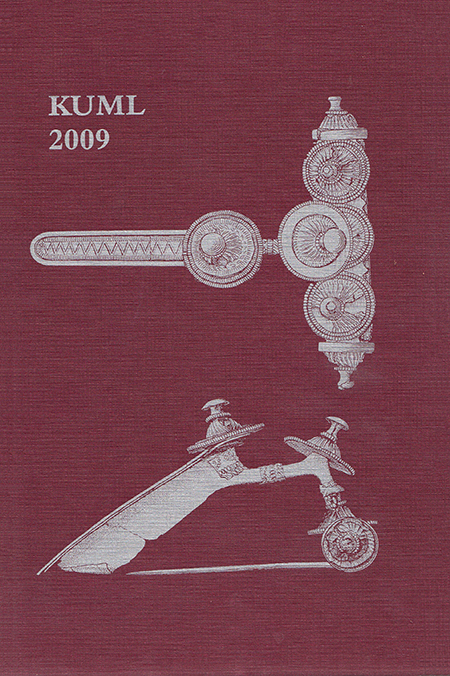Om datering af mosefundne lig og beklædningsdele
DOI:
https://doi.org/10.7146/kuml.v58i58.26391Nøgleord:
datering, mosefundne lig, beklædningsdeleResumé
Dating of human corpses and clothing found in bogs
It is well known that human remains, textiles and hides like all kinds of organic material, are subject in most cases to rapid decomposition, rarely found in archaeological contexts. Their preservation requires special environmental conditions to prevent their destruction by micro-organisms. North European peat bogs constitute an environment which is particularly conducive to preservation of organic materials, and Denmark possesses a unique and very rich collection of prehistoric bodies and garments found in bog deposits. Especially on the Jutland peninsula, where the special environment of raised bogs preserves proteinaceous materials, an impressive group of human remains with well-preserved soft tissues and hair, woollen textiles and objects of animal hide and leather has survived almost intact. Many of these finds were unearthed prior to 1900, and all before 1953. They constitute a very special group of archaeological artefacts which have both fascinated and repelled scientists and laymen alike. However, they also constitute an unprecedented source of information that allows us to take a more detailed look at prehistoric individuals, their tastes and beliefs. This article presents the results of 46 new radiocarbon (14C) analyses of textiles and hides from Danish bogs. In all, 80 radiocarbon dates are presented (table 1). Out of a total of 54 Danish bog finds containing items of hides and textile, 29 are associated with bog bodies. Until now, only 18 of these had been dated. The results show that the custom of depositing clothed bodies in bogs is a phenomenon associated with the Scandinavian Pre-Roman Iron Age. A further important result is that finds previously dated to the Late Bronze Age have now been dated later in time and cluster with the majority of other finds. Accordingly, the Borremose I, II and III finds, previously dated to 920-200 BC, are now dated to a much narrower period of 483-95 BC. Yet another important new result is the re-dating of the Huldremose woman. She was previously dated to 200 BC-AD 350, but the new date of 210-41 BC securely links her with the Pre-Roman Iron Age. Most of the bog bodies were carefully placed in the bog – wrapped or dressed in various garments of woollen textile or hide (table 1 and figs. 1-9). As it has now been confirmed that most of the textiles and items of clothing from the bog finds belong to a Pre-Roman tradition, this gives a whole new perspective for our understanding of costume development in Scand inavia. This would not have been possible based on the scattered and much more fragmented textile finds recovered from grave contexts. The complete series of dates now available provides a new tool for the interpretation of textile and hidetechnology, which is clearly different from the preceding Bronze Age and the subsequent Late Iron Age costume traditions. The many new dates demonstrate that hides and woven textiles were an important part of the Early Iron Age costume tradition and they necessitate a revision of our understanding, not only of costume history, but Danish Pre-Roman Iron Age society in general. These research developments would not have been possible without the radiocarbon dating method and its current level of precision.
Ulla Mannering & Margarita Gleba
Danmarks Grundforskningsfonds
Center for Tekstilforskning, Københavns Universitet
Jan Heinemeier
AMS 14C Daterings Laboratoriet,
Institut for Fysik og Astronomi,
Aarhus Universitet
Göran Possnert
Tandemlaboratoriet, Uppsala Universitet
Downloads
Publiceret
Citation/Eksport
Nummer
Sektion
Licens
Fra og med årgang 2022 er artikler udgivet i Kuml med en licens fra Creative Commons (CC BY-NC-SA 4.0).
Alle tidligere årgange af tidsskriftet er ikke udgivet med en licens fra Creative Commons.


